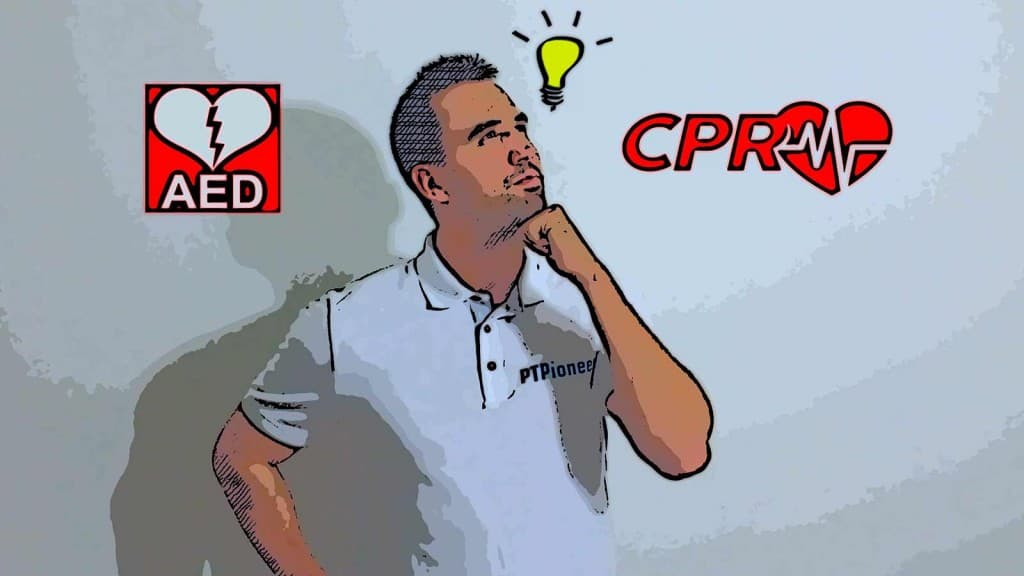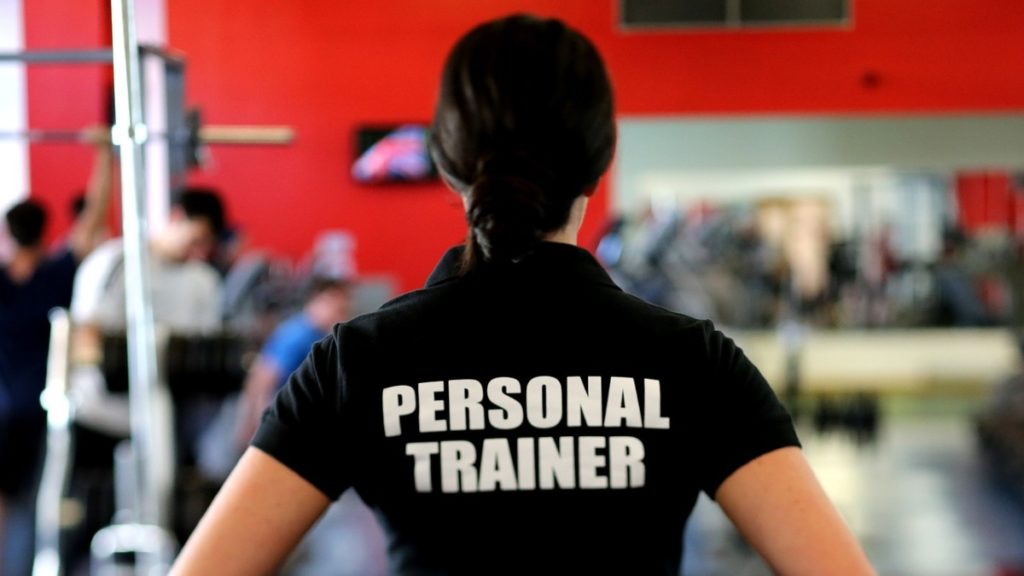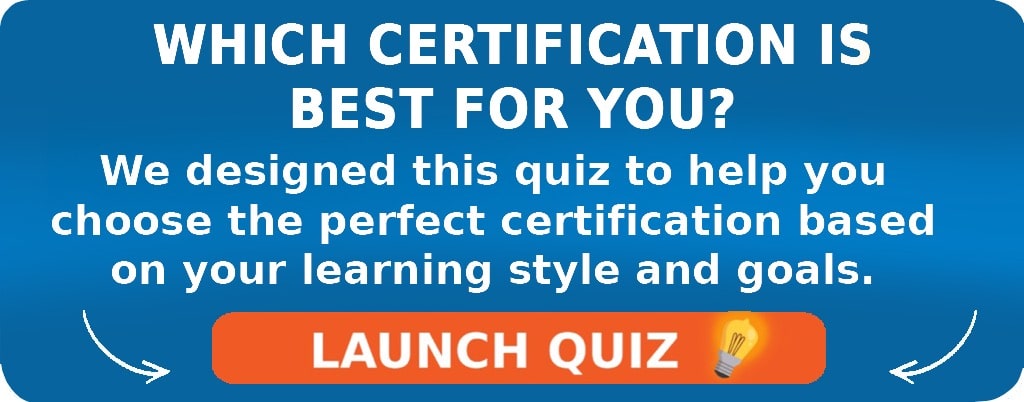
Every gym has them. And personal trainer is a massively important member of any gym team. Thanks to their one-on-one input, a personal trainer can help a range of people who might come to a gym for their specific reason.
The thing is, if YOU are looking to get into the world of fitness or perhaps you already work in a gym but want something more, becoming a personal trainer is a solid route to take. Once you get your certification, the world of personal training opens so many other doors for you.
So if you are looking to learn more about personal trainers, this blog will cover the following, providing you with the information YOU need to know about the world of a personal trainer. And specifically, we will be looking at the following:
- The requirements to become a personal trainer
- The responsibilities of a personal trainer
- And finally, the duties of a personal trainer
- So let’s jump right in, then!
If you are not yet certified as a personal trainer, make sure to take the quiz to find out which certification is best for you.
Also, check out my must-read article on the top five certifications. The menu at the top of this page will answer any question related to your personal training. If you have any questions, don’t hesitate to leave me a comment here (I’ll respond within 24 hours). Also, visit the home page for the most recent and popular articles.
Want to Become a PT? Here are the personal trainer job requirements

So you have thought about it and realize that your entry point into the fitness world is as a personal trainer.
But what exactly are the certified personal trainer requirements you need to meet to become one? Also, check out my ultimate guide on how to become a trainer.
What do you need to be a personal trainer?
Age
To be a personal trainer, you must be at least 18.
But why 18?
Well, it’s simple, really. The accreditation course you will take has the age as part of its personal trainer requirements.
And a maximum age? Well, none is specified, so if you are older, fit, and fancy a new direction in life as a personal trainer, why not!
High School Diploma
There is a basic education needed to become a personal trainer.
Many of the certification courses you might want to undertake will require you to have at least a high-school diploma.
Some might even want you to have a college degree before you can sign up for them, so bear that in mind when searching for the right certification provider.
For some of the certifications to become a personal trainer, a bachelor’s degree is usually needed.
CPR/AED Qualified

ALL personal trainers will need to be CPR/AED qualified.
In fact, it’s best to get this done even before you look toward the rest of your personal trainer certification requirements.
But what exactly is a CPR/AED qualification, and how can you obtain them?
You will learn various medical procedures when undertaking a CPR/AED qualification. These can be used in treating a patient with a cardiac emergency, such as suffering from a stroke or a heart attack.
This will include first aid training, cardiopulmonary resuscitation (CPR), and how to use an automated external defibrillator.
But why is this necessary?
Well, think about it. As a personal trainer, you are dealing with people of varying ages, fitness levels, and who are working out. This means raised heart rate levels.
And while you would have thoroughly accessed each client and worked out a training program for them, there is always a small chance that, at some time, a client might have a cardiac emergency.
And don’t you want to be trained to know what exactly to do in that situation?
A CPR/AED certification forms a very small part of the education needed to become a personal trainer but it’s important, that’s for sure!
And where can you obtain this certification?
Many hospitals, medical centers, and even your local fire station will have courses you can sign up for.
Other organizations, such as the American Heart Association, the Red Cross, the National CPR Foundation, and a host of other training centers, will also offer the course.
And what can you expect when attending such a course?
Well, there is plenty of theory to work through with the instruction but of course, a practical, hands-on portion is also a crucial part of any CPR/AED course.
And that will be done with a CPR dummy where you will learn the exact techniques used in CPR and how to use an automated external defibrillator as well.
You will also receive manual and basic first aid instruction during the program.
Sign up for one, take a day out of your schedule, attend the course, and pass the exam.
It’s that simple, really.
Exclusive PTP CPT Offers |
||
|---|---|---|
Gold Standard Cert | Most Popular Cert | Best Study Materials |
A Good Option | A Good Option | Best CPT for you?  |
Personal Trainer Certification

Now the most important thing about becoming a personal trainer is the need to be certified.
Why?
Well, it means you are qualified to put a client through their paces in terms of a training program, something you would be drawing up for them.
In truth, though, it just shows that you know what you are talking about and are an expert in your field.
You don’t visit a doctor without qualifications, do you?
Or have a lawyer defend you in a case if they aren’t qualified, right?
So why should the world of personal training be any different? Therefore it’s important to take personal trainer certification requirements seriously.
That means you have the education needed to become a personal trainer, making you more marketable. Some of the accreditations/certifications you could consider are provided by the following:
- American College of Sports Medicine
- National Academy of Sports Medicine
- American Council on Exercise
- International Sports Sciences Association
- take the quiz to see which certification right for you
All of these require you to pass an examination to receive your certification.
While many provide impressive study aids to help you along the way, getting some third-party help is also recommended. Online study portals such as Trainer Academy can help you ensure that you pass your certification easily.
And there you have it! Now you know the certified personal trainer requirements that allow you to become part of the exciting fitness world!
As a Personal Trainer, What are Your Responsibilities?

Ok, we know that as a personal trainer, you will work with individual clients.
Essentially, it’s all about using exercise to help them make a healthy change to their lifestyle but of course, it goes a little deeper than that.
The personal trainer job description is all-encompassing. What does a personal trainer do?
Why? Well, you might be an exercise specialist, but as a personal trainer, you will also need a few more strings to your bow.
Think about it; you need to educate clients on why the exercises you give them will help them in the long run.
Not only that, but you will need to motivate them as well. You know that some days are far easier when you work out than others. Occasionally, your clients will struggle for motivation and that’s where you will step in.
But let’s take a quick look at the personal trainer responsibilities you are expected to fulfill.
Setting Goals
After meeting with a new client, the first thing a personal trainer does is set both short-term and long-term goals for them. And this is a very important step.
Why?
Well, it shows the client what you have in store for them, how you can ultimately help them, and gives them a destination to reach.
For example, a client wanting to lose weight will need a final goal weight that you think they can reach. But they also need short term goals such as a weight loss figure per week and month.
All of these goals must be attainable as that will help with motivation.
Coach, Motivate, and Educate

It goes without saying that most of your day as a personal trainer will be spent in one-on-one sessions with clients.
Most of these will revolve around using gym equipment. Initially, it would be best if you focused on coaching your clients on correctly using the equipment.
Often, that means showing them first. You are the professional, after all!
If they have never used the equipment before, you will guide them every step of the way through each exercise you wish them to accomplish. Having them do it right the first time is crucial in ensuring that they start on a firm foundation to meet their goals.
It also shows the client that you do indeed know what you are talking about!
But there is more to that as well.
We have mentioned motivation before, which is an often undervalued part of a personal trainer’s skills.
Although you would have set each of your client’s realistic goals, you have to place yourself in their shoes. Sometimes, reaching those goals can seem like an insurmountable task.
Take someone who is overweight and has made the brave decision to turn their life around. Just setting foot into a gym can be an overwhelming experience, especially if they have body image issues.
While your training program will help them shed pounds, your motivational skills will keep them returning.
Training is hard for people in situations like these but with care and consideration. It’s up to you to guide and motivate them toward a healthier lifestyle.
Give Advice
Your training and certification mean you have lots of knowledge about various subjects about fitness.
Exclusive PTP CPT Offers |
||
|---|---|---|
Gold Standard Cert | Most Popular Cert | Best Study Materials |
A Good Option | A Good Option | Best CPT for you?  |
They are the basic requirements to be a personal trainer.
Of course, that includes knowledge about training, fitness, and gym equipment, but that’s a given, right?
You also know how your clients can make lifestyle changes to their health and nutrition information. And as a personal trainer, you will put all of this to use daily as you advise your clients.
And you can continue to learn as you go along. Nothing stops you from adding more knowledge and expanding your expertise by completing more certification courses.
The possibilities are endless, really.
Train Your Clients and Learn More About Them

We mentioned earlier that for new clients, you would actually show them the correct way to use the gym equipment.
For more regular clients, well, you don’t need to as they would by now know how to use each machine effectively. But that doesn’t mean you can leave them to their own devices.
As their fitness level grows, you will take each and every client through their gym session. It’s here that your personal, hands-on approach shows them how much you care for their health and fitness levels.
It’s also a time when you learn a little more about each individual and what makes them tick. And you can use this to help motivate them.
Each client is unique and it’s by spending time with them while they train that you build up a relationship with them.
And it’s an awesome part of the job of a fitness trainer, that’s for sure.
Monitoring Client’s Progress
Last but not least is monitoring each client’s progress in their overall fitness levels.
While this might not be something you need to do at every session, you should record and store some readings related to your clients at least once a week.
This could include the following:
- Heart rate (resting and while exercising)
- Weight
- Body-fat percentage
- Body measurements include the thigh, arm, stomach, chest, etc.
Having these from the outset makes it easier to show a client the progress they are making and, in that way, help motivate them.
In fact, progress is often the biggest motivation that they need.
What are the Daily Duties of a Personal Trainer?

So now that we have dealt with your responsibilities as a personal trainer, it’s time to look at the personal trainer duties to be carried out daily. These are in no particular order because none of them is more important than the other.
Client Screening
As a personal trainer, your lifeblood is your clients. And clients come and go.
Often, once clients have reached their initial goals, they might opt to no longer use your services as you have given them everything they need to train on their own.
And so, you will need new clients and once they have been signed up, they need to be screened.
We have discussed gathering all the vital information you need to know about your client, which is basically what client screening is.
It’s about determining their fitness levels, taking readings of their heart-rate, fat percentage, body measurements, and weight to have a base point to monitor their progress.
But it’s also a little more than that as you begin your relationship with them and get to know them a little better.
Devising Workout Programs

You will devise workout programs between screening and working out one-on-one with clients.
Each one of these is totally unique for each individual client. And they are based on what it is the client wants to achieve by using you as their personal trainer and working out.
For example, someone might want to build muscle specifically, another client might want to lose weight, while someone else might recover from injury and need specific strength training.
This is where your expertise in exercise and the human body comes to the fore. And it’s an awesome part of being a personal or physical trainer, that’s for sure.
Training
It goes without saying that a large part of your day will be spent training your clients one-on-one.
That’s all about getting them through their routine, which you have tailor-made for them. It’s also a time when you will provide them with the necessary motivation and information on their progress.
Self-Improvement
Improving yourself can only have a positive impact on your personal training journey.
And it’s not only about working out, although it’s good to keep yourself in the game, obviously.
If you have free time during the day, use it to plot your future; for example, what certification could you focus on next to help expand your knowledge?
Or if you have already chosen your next certification, use this time to ensure you properly prepare for the certification exam.
Marketing
To survive as a personal fitness trainer, you need clients. And if you are good at your personal training jobs, your clients are often your best source of new referrals.
So ask them to suggest your services to any friends they might have who need the help of a personal trainer.
But you can also market yourself; social media is a great start.
Use Facebook, Twitter, and Instagram to your advantage. Advertise your services on local Facebook groups or even consider small social media ad campaigns.
And don’t forget traditional marketing methods either, such as business cards, flyers, and posters. Get yourself out there, meet people at businesses around the gym, and tell them what it is you do.
This will help you get more personal trainer jobs and clients.
You will be amazed at how many clients you can make that way.
First Aid
The fact that a personal trainer has CPR/AED certification and knowledge of first aid means that they may be called to use that knowledge in the gym from time to time.
These are just some of the daily duties you will perform as a personal trainer.
So Let’s Wind Down…

Before jumping to a conclusion, if you have not done so yet, take the quiz to see which personal training certification best fits your training style.
Without a doubt, the life of a personal trainer is varied. No two days will be the same, that’s for sure, even though it mostly revolves around gym and exercise.
But it’s the people that you work with that keep it interesting.
Lastly, it’s good to note the characteristics that a good personal trainer should have. It’s something to consider as you begin your journey in the fitness world.
- A personal trainer is patient.
As a personal trainer, you know exercise, gym equipment, and many other things your clients do not. So it pays to show some patience.
Think about it; a client might not use the equipment correctly. In fact, you may need to show them how to on a few occasions. Staying patient is key.
- A personal trainer is analytical.
Working with numbers, exercises, and the like means a personal trainer has to have a fairly analytical brain.
- A personal trainer has empathy.
As a personal trainer, you need empathy. Each client has a different story to tell and will rely on you to be empathetic as you help and motivate them toward a new lifestyle.
- A personal trainer listens.
As a personal trainer, you need to live in the moment with each and every client. And that mostly means being a good listener. Hear what they are saying and figure out a way to help your clients achieve the goals they want.
Often, you can find out more from a client while they are working more so than in your initial client screening.
There you have it! We have outlined everything you need to know about personal training job requirements that you should know.
And that’s what you can expect from the world of personal training.
One thing is for sure, and it’s never dull!
Are there questions that you still have about the functions of a personal trainer? You can use the comment box below the FAQ to ask.
Personal Trainer Requirements and CPT Duties/Responsibilities FAQ
Why do you need a Personal Trainer certification?
Having a personal trainer certification shows that you are certified and qualified to put a client through a fitness program. It shows you have the training and skill to be regarded as an expert in the physical training field.
What is the expected role of a personal fitness trainer?
A personal fitness trainer will help the client achieve the following:
– Helping clients use exercise to live healthily
– Setting short and long term goals for clients for a weight loss program
– Educating and motivating the client to keep up with the set goals
– Advising on nutrition, fitness, etc.
What are the requirements to become a CPT?
The basic requirements to become a CPT are:
– Being at least 18 years old
– Have a high-school diploma or college degree, depending on the certification body.
– Be CPR/AED qualified
– Sign up for any certification you choose, study extensively, and write and pass the exam.
What are the specific personal trainer duties?
Personal trainers perform the following specific duties:
– Screening of clients to determine their fitness level and for progress monitoring
– Creating workout programs on an individual basis
– Taking clients through daily training routines
– Maximizing opportunities for self-development through advanced certification
– Marketing your business through referrals, social media, and traditional marketing methods
Where can you find personal trainer jobs?
Personal trainers have the privilege of working in a lot of places, such as:
– Corporate Wellness
– Outdoor Boot Camps
– Community Centers
– Athletic Performance Centers
– Resorts and Cruise Ships
– Client’s Home
– Apartment Complexes
– Online Training
– Gyms
What exactly are CPT’s responsibilities?
A personal fitness trainer will help the client achieve the following:
– Helping clients use exercise to live healthily
– Setting short and long term goals for clients for a weight loss program
– Educating and motivating the client to keep up with the set goals
– Advising on nutrition, fitness, etc.
How intensive are CPT jobs?
Since Personal training involves helping clients to make positive lifestyle changes that will make them achieve goals with sustainable results, you have to dedicate your time to giving them the best through proper motivation and follow-up on the assigned task.
So, a personal trainer must always be available to meet the needs of their clients while showing a lot of enthusiasm.
How much is a Personal Trainer Salary?
The Personal Trainer salary in the United States averages around $61,034 but fluctuates between $44,051 and $74,976. This salary range depends on factors such as education, additional skills, certifications, and the number of years spent in the profession.
Where can I get certified for personal trainer jobs?
You can choose any of these certification bodies to get certified.
– American College of Sports Medicine
– National Academy of Sports Medicine
– American Council on Exercise
– International Sports Sciences Association
How easy is it to get a personal trainer certification?
With the right study aids from any of the certifying bodies, intensive studies, and getting extra third-party help from online study portals such as Trainer Academy, you will have a 99% pass rate in your exams.
Can I get CPT insurance?
Yes, you can get CPT insurance from any of the bodies you are certified with and it will cost you $129-$169.

 Have a question?
Have a question? 

![Wellness Coach vs Health Coach Career Comparison in [year] 29 health vs wellness coach - a side by side image of a health coach and wellness coach showcasing the differences between each profession](https://www.ptpioneer.com/wp-content/uploads/2024/02/Health-Coach-vs-Wellness-Coach.png)
![Life Coach vs Wellness Coach [year] Career Comparison 30 health vs wellness coach - a side by side image of a health coach and wellness coach showcasing the differences between each profession](https://www.ptpioneer.com/wp-content/uploads/2024/02/wellness-coach-vs-life-coach.png)
![What Is a CPT Certification? + Other CPT Questions [year] 31 What Is a CPT Certification? + Other CPT Questions [year] 15](https://www.ptpioneer.com/wp-content/uploads/2023/09/what-is-a-cpt-certification.jpg)


![Yoga Instructor Career - [year] Salary, Prospects & More 34 Yoga Instructor Career](https://www.ptpioneer.com/wp-content/uploads/2021/08/Yoga-Instructor-Career.jpg)

Tyler Read
PTPioneer Editorial Integrity
All content published on PTPioneer is checked and reviewed extensively by our staff of experienced personal trainers, nutrition coaches, and other Fitness Experts. This is to make sure that the content you are reading is fact-checked for accuracy, contains up-to-date information, and is relevant. We only add trustworthy citations that you can find at the bottom of each article. You can read more about our editorial integrity here.